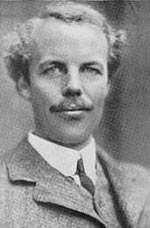Origin of the Idea  <a onClick="window.open('/olcweb/cgi/pluginpop.cgi?it=gif::::/sites/dl/free/0077337727/124310/origins_image.gif','popWin', 'width=70,height=90,resizable,scrollbars');" href="#"><img valign="absmiddle" height="16" width="16" border="0" src="/olcweb/styles/shared/linkicons/image.gif"> (1.0K)</a> <a onClick="window.open('/olcweb/cgi/pluginpop.cgi?it=gif::::/sites/dl/free/0077337727/124310/origins_image.gif','popWin', 'width=70,height=90,resizable,scrollbars');" href="#"><img valign="absmiddle" height="16" width="16" border="0" src="/olcweb/styles/shared/linkicons/image.gif"> (1.0K)</a> | 12.1 Real-Balances Effect |  <a onClick="window.open('/olcweb/cgi/pluginpop.cgi?it=gif::::/sites/dl/free/0077337727/124310/origins_image.gif','popWin', 'width=70,height=90,resizable,scrollbars');" href="#"><img valign="absmiddle" height="16" width="16" border="0" src="/olcweb/styles/shared/linkicons/image.gif"> (1.0K)</a> <a onClick="window.open('/olcweb/cgi/pluginpop.cgi?it=gif::::/sites/dl/free/0077337727/124310/origins_image.gif','popWin', 'width=70,height=90,resizable,scrollbars');" href="#"><img valign="absmiddle" height="16" width="16" border="0" src="/olcweb/styles/shared/linkicons/image.gif"> (1.0K)</a> | 12.2 Efficiency Wage |
 <a onClick="window.open('/olcweb/cgi/pluginpop.cgi?it=gif::::/sites/dl/free/0077337727/124310/origins_image.gif','popWin', 'width=70,height=90,resizable,scrollbars');" href="#"><img valign="absmiddle" height="16" width="16" border="0" src="/olcweb/styles/shared/linkicons/image.gif"> (1.0K)</a> <a onClick="window.open('/olcweb/cgi/pluginpop.cgi?it=gif::::/sites/dl/free/0077337727/124310/origins_image.gif','popWin', 'width=70,height=90,resizable,scrollbars');" href="#"><img valign="absmiddle" height="16" width="16" border="0" src="/olcweb/styles/shared/linkicons/image.gif"> (1.0K)</a> | 12.1 Real-Balances Effect |
The real balances effect is also known as the Pigou effect, after its originator, Arthur C. Pigou. (1877-1959). Pigou was born on the Isle of Wight in England, and studied at Cambridge University. He eventually became the chair of political economy at Cambridge University, succeeding Alfred Marshall, who influenced Pigou greatly. Pigou was a welfare economist, meaning that he was concerned with how to maximize social well-being beyond the scope of the individual. He contributed to theories of income distribution, externalities, and price discrimination.
|  <a onClick="window.open('/olcweb/cgi/pluginpop.cgi?it=jpg::::/sites/dl/free/0077337727/124320/origin11_1.jpg','popWin', 'width=200,height=298,resizable,scrollbars');" href="#"><img valign="absmiddle" height="16" width="16" border="0" src="/olcweb/styles/shared/linkicons/image.gif"> (33.0K)</a> <a onClick="window.open('/olcweb/cgi/pluginpop.cgi?it=jpg::::/sites/dl/free/0077337727/124320/origin11_1.jpg','popWin', 'width=200,height=298,resizable,scrollbars');" href="#"><img valign="absmiddle" height="16" width="16" border="0" src="/olcweb/styles/shared/linkicons/image.gif"> (33.0K)</a> |
Photograph courtesy of: http
 <a onClick="window.open('/olcweb/cgi/pluginpop.cgi?it=gif::::/sites/dl/free/0077337727/124310/origins_image.gif','popWin', 'width=70,height=90,resizable,scrollbars');" href="#"><img valign="absmiddle" height="16" width="16" border="0" src="/olcweb/styles/shared/linkicons/image.gif"> (1.0K)</a> <a onClick="window.open('/olcweb/cgi/pluginpop.cgi?it=gif::::/sites/dl/free/0077337727/124310/origins_image.gif','popWin', 'width=70,height=90,resizable,scrollbars');" href="#"><img valign="absmiddle" height="16" width="16" border="0" src="/olcweb/styles/shared/linkicons/image.gif"> (1.0K)</a> | 12.2 Efficiency Wage |
The notion that higher wages promote greater productivity - efficiency wages - appears often in the history of economic thought. Although not credited with developing the term, Adam Smith (1723-1790) was one of the first to articulate the idea. Smith argued that there exists a positive relationship between wages and worker productivity. As Smith put it,
The liberal reward for labour, as it encourages the propagation, so it increases the industry of the common people. The wages of labour are the encouragement of industry, which like every other human quality, improves in proportion to the encouragement it receives. A plentiful subsistence increases the bodily strength of the labourer, and the comfortable hope of bettering his position, and of ending his days in ease and plenty, animates him to exert that strength to the utmost. Where wages are high, accordingly, we shall always find the workmen more active, diligent, and expeditious, than where they are low.
Keep in mind that Smith was writing during the time of the industrial revolution in Great Britain. At that time it was common to have wages that barely provided for physical subsistence, and often times fathers (the primary wage laborer), would forgo meals so that children could eat. Higher wages would allow workers, as Smith suggests, to increase bodily strength, and important dimension to productivity in late 18th century Britain. Modern efficiency wage theory focuses more on worker morale and labor turnover, and less on the physical needs of workers, a central issue in Smith's time.
Robert Owen (1771-1858), owner of the New Lanark spinning mills in Scotland, attempted to put the idea of efficiency wages into practice. Owen, who owned and ran the mills from 1800-1820, also established the model community of New Lanark. Operating during the industrial revolution, a period in which wages were pushed to subsistence, Owen paid his workers significantly more than the prevailing wages of the time, and his mills were both productive and profitable.
Several economists developed formal theories of efficiency wages. These theories are summarized by George Akerlof and Janet Yellen, eds., in their book, Efficiency Wage Models of the Labor Market (Cambridge: Cambridge University Press, 1986).
|  <a onClick="window.open('/olcweb/cgi/pluginpop.cgi?it=jpg::::/sites/dl/free/0077337727/124320/origin11_2.jpg','popWin', 'width=303,height=454,resizable,scrollbars');" href="#"><img valign="absmiddle" height="16" width="16" border="0" src="/olcweb/styles/shared/linkicons/image.gif"> (38.0K)</a> <a onClick="window.open('/olcweb/cgi/pluginpop.cgi?it=jpg::::/sites/dl/free/0077337727/124320/origin11_2.jpg','popWin', 'width=303,height=454,resizable,scrollbars');" href="#"><img valign="absmiddle" height="16" width="16" border="0" src="/olcweb/styles/shared/linkicons/image.gif"> (38.0K)</a> |
Photograph courtesy of: (c)Nance Trueworthy |


